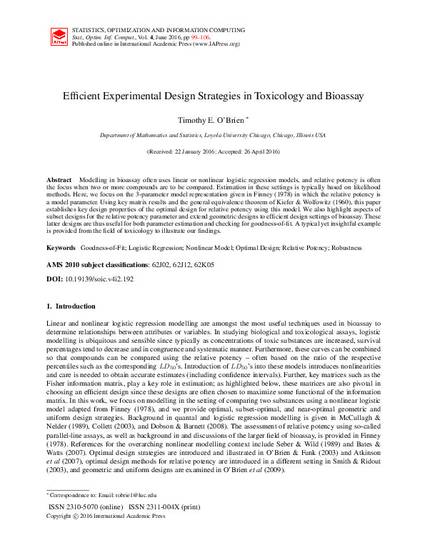
Modelling in bioassay often uses linear or nonlinear logistic regression models, and relative potency is often the focus when two or more compounds are to be compared. Estimation in these settings is typically based on likelihood methods. Here, we focus on the 3-parameter model representation given in Finney (1978) in which the relative potency is a model parameter. Using key matrix results and the general equivalence theorem of Kiefer & Wolfowitz (1960), this paper establishes key design properties of the optimal design for relative potency using this model. We also highlight aspects of subset designs for the relative potency parameter and extend geometric designs to efficient design settings of bioassay. These latter designs are thus useful for both parameter estimation and checking for goodness-of-fit. A typical yet insightful example is provided from the field of toxicology to illustrate our findings.
© International Academic Press, 2016.
Available at: http://works.bepress.com/timothy-obrien/7/
Author Posting © International Academic Press, 2016. This article is posted here by permission of the International Academic Press for personal use, not for redistribution. The article was published in Statistics, Optimization and Information Computing, Volume 4, Issue 2, June 2016, http://dx.doi.org/10.19139/soic.v4i2.192